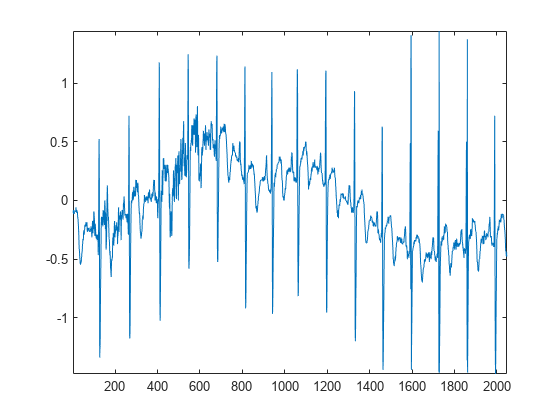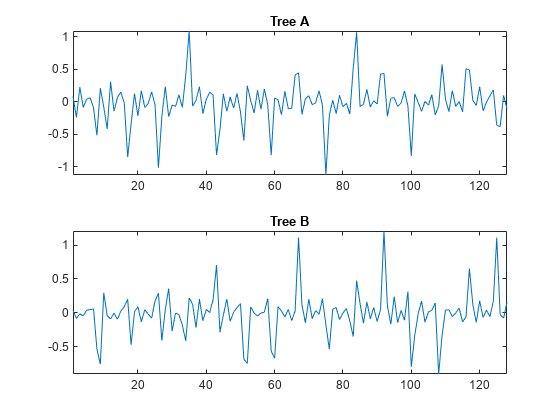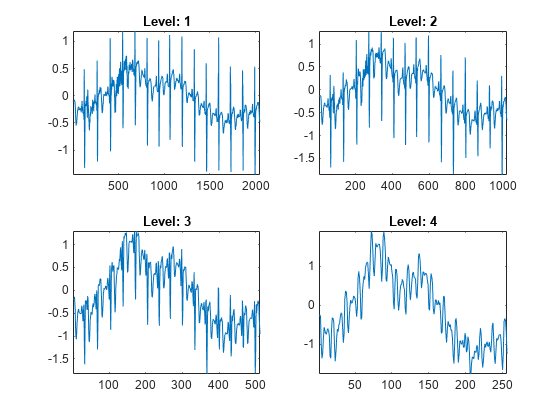dualtree
Kingsbury Q-shift 1-D dual-tree complex wavelet transform
Description
[
returns the 1-D dual-tree complex wavelet transform (DTCWT) of A,D] = dualtree(X)X.
The output A is the matrix of
real-valued final-level scaling (lowpass) coefficients. The output D is
an L-by-1 cell array of complex-valued wavelet coefficients, where
L is the level of the transform.
The input X must have at least two samples. The DTCWT is obtained
by default down to level
floor(log2N), where
N is the length of X if X is
a vector and the row dimension of X if X is a
matrix. If N is odd, X is extended by one sample by
reflecting the last element of X.
By default, dualtree uses the near-symmetric biorthogonal filter
pair with lengths 5 (scaling filter) and 7 (wavelet filter) for level 1 and the orthogonal
Q-shift Hilbert wavelet filter pair of length 10 for levels greater than or equal to
2.
[___] = dualtree(
specifies additional options using name-value pair arguments. For example,
X,Name,Value)'Level',10 specifies a decomposition down to level 10.
Examples
Input Arguments
Name-Value Arguments
Output Arguments
References
[1] Antonini, M., M. Barlaud, P. Mathieu, and I. Daubechies. “Image Coding Using Wavelet Transform.” IEEE Transactions on Image Processing 1, no. 2 (April 1992): 205–20. https://doi.org/10.1109/83.136597.
[2] Kingsbury, Nick. “Complex Wavelets for Shift Invariant Analysis and Filtering of Signals.” Applied and Computational Harmonic Analysis 10, no. 3 (May 2001): 234–53. https://doi.org/10.1006/acha.2000.0343.
[3] Le Gall, D., and A. Tabatabai. “Sub-Band Coding of Digital Images Using Symmetric Short Kernel Filters and Arithmetic Coding Techniques.” In ICASSP-88., International Conference on Acoustics, Speech, and Signal Processing, 761–64. New York, NY, USA: IEEE, 1988. https://doi.org/10.1109/ICASSP.1988.196696.
Extended Capabilities
Version History
Introduced in R2020a



